Although many people undergo orthodontic treatment for cosmetic reasons, there are enormous benefits to their health as well.
Have a look at the results of some of our patients…

Severe Protrusion
Identical twin Josh had a severe skeletally based Class II Division I malocclusion. This means there is a relative protrusion of the upper teeth ahead of the lower teeth (10mm in Josh’s case) primarily due to an undershot lower jaw. In a growing patient this problem can be addressed using a Twin Block functional appliance (for 12 months) to help modify jaw growth and normalise the jaw relationship. The teeth are then straightened with fixed appliances (Braces) for approx 12 months. The total treatment time was 2 years. No extractions are required if there is minimal crowding of the teeth, optimal growth, and excellent patient cooperation as was the case here.

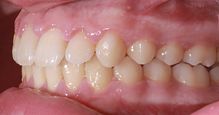
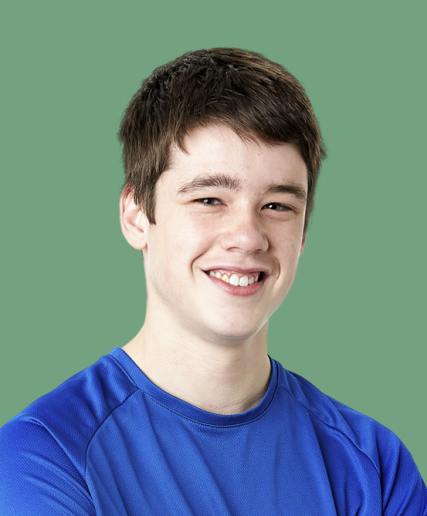
Severe Protrusion
Identical twin Jordan had a severe skeletally based Class II Division I malocclusion. This means there is a relative protrusion of the upper teeth ahead of the lower teeth (12mm in Jordan’s case) primarily due to an undershot lower jaw. In a growing patient this problem can be addressed using a Twin Block functional appliance (for 12 months) to help modify jaw growth and normalise the jaw relationship. The teeth are then straightened with fixed appliances (Braces) for approx 12 months. The total treatment time was 2 years. No extractions are required if there is minimal crowding of the teeth, optimal growth, and excellent patient cooperation as was the case here.
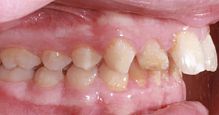
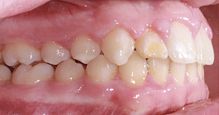

Lower Protrusion/Crowding
An underbite, when the lower teeth land in front of the upper teeth in a closed jaw, often results in an abnormal protrusion of the lower jaw. This can lead to excess pressure on the jaw joint and uneven, premature tooth wear. No extractions were required in this case.

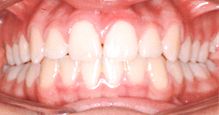

Deep bite/crowding and protrusion
With a deep bite the upper teeth cover the lower teeth. The lower teeth can come up so far behind the front teeth that the patient is biting onto their gums. A deep bite can cause excessive wear to the front teeth and gum damage. This difficult case required twin blocks to correct the jaw position and braces to correct the deep bite. No extractions were required in this case.



Cleft Palate and Severe Crowding
Breanna had missing upper 2nd incisors and severe lower crowding requiring lower premolar extractions in addition to her cleft palate.
The surgery required to repair a cleft palate often results in severe tooth crowding because of the constricting effects of scar tissue in the patient's mouth. Cleft palate patients are also more likely to suffer from discrepancies in their jaw growth. Orthodontic treatment can help to normalise the appearance of the patient's face and jaw, as well as contributing to their overall oral health. Cleft palate patients are referred to us by the team at Waikato Hospital.
Crowding occurs when the dental arch is too small to accommodate the teeth. Severe crowding can result in the bone and gums becoming thin and receding, and people with severely crowded teeth are more susceptible to gum disease as it is difficult for them to brush and floss well. Other consequences include impacted teeth (teeth which should have grown in but cannot because of the lack of space), difficulty biting and chewing and an unattractive appearance.



Anterior Crossbite
A crossbite can affect either the back teeth or the front teeth or both. The upper teeth should fit outside the lower teeth, but with a crossbite the upper teeth bite inside the lower teeth, towards the tongue. This may occur on one or both sides of the mouth and can cause difficulty with biting and chewing as well as jaw misalignment.



Severe Crowding
Crowding occurs when the dental arch is too small to accommodate the teeth. Severe crowding can result in the bone and gums becoming thin and receding, and people with severely crowded teeth are more susceptible to gum disease as it is difficult for them to brush and floss well. Other consequences include impacted teeth (teeth which should have grown in but cannot because of the lack of space), difficulty biting and chewing and an unattractive appearance.
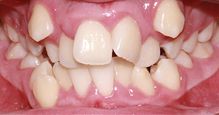


Protrusion
Protrusion or overjet occurs when the upper teeth extend too far forward or the lower teeth do not extend far enough. This means the lower teeth can damage the palate behind the top front teeth. No extractions were required in this case.
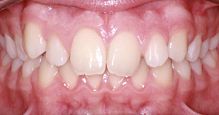

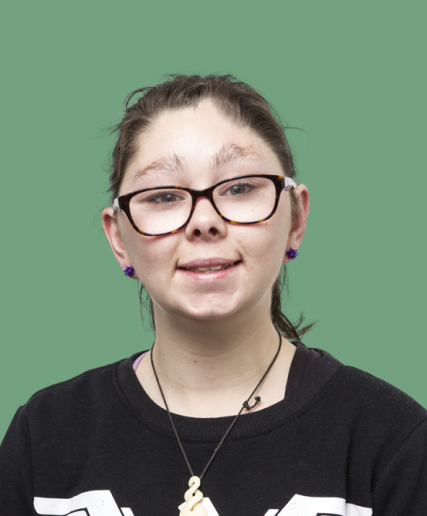
Severe Crowding – Wish for a Smile
Crowding occurs when the dental arch is too small to accommodate the teeth. Severe crowding can result in the bone and gums becoming thin and receding, and people with severely crowded teeth are more susceptible to gum disease as it is difficult for them to brush and floss well. Other consequences include impacted teeth (teeth which should have grown in but cannot because of the lack of space), difficulty biting and chewing and an unattractive appearance. One of the requirements to qualify for the Wish for a Smile programme is excellent oral hygiene. Anisha worked really hard on improving this before and during her treatment and her gums are now healthy.



Deep Bite/Crowding
With a deep bite the upper teeth cover the lower teeth. The lower teeth can come up so far behind the front teeth that the patient is biting onto their gums. A deep bite can cause excessive wear to the front teeth and gum damage. No extractions were required in this case.



Severe deep bite with protrusion
An openbite affects the ability to bite and chew. The upper and lower incisors do not touch when the jaw is closed and therefore pressure is placed on the back teeth. A common result of this malocclusion is trouble keeping lips closed, tooth wear and unwanted habits such as tongue thrusting. This case required twin blocks to correct the jaw position and braces to correct the deep bite. No extractions were required in this case.








